In a world where your fridge can text you about its dwindling yogurt supply, IoT device connectivity isn’t just a trend; it’s the future. Imagine a life where your coffee maker knows just how you like your brew, all thanks to seamless communication between devices. It’s like having a personal assistant who never sleeps—unless you forget to charge it, of course.
Table of Contents
ToggleOverview of IoT Device Connectivity
IoT device connectivity plays a crucial role in enhancing the functionality of interconnected systems. Understanding its components and significance is essential for grasping its impact on daily life.
Definition and Importance
IoT device connectivity refers to the ability of various devices to communicate with each other over the internet. This communication allows smart devices, like home appliances and wearables, to share data and automate tasks. Importance lies in efficiency and convenience. Connected devices contribute to energy savings, improved productivity, and enhanced user experiences. In a world increasingly driven by automation, seamless communication among devices streamlines activities, making life easier and more enjoyable.
Key Components Involved
Several key components underpin IoT device connectivity. First, sensors collect data from the environment, providing crucial inputs for decision-making. Second, communication protocols facilitate the data exchange, ensuring devices can translate their signals effectively. Third, cloud computing services store and process the vast amounts of data generated by these devices. Connectivity also depends on gateway devices that bridge different networks, allowing for extensive interoperability. Together, these components enable comprehensive ecosystems, thus maximizing automation and data utilization across devices.
Types of Connectivity Technologies

Various connectivity technologies enable seamless communication among IoT devices. Each technology serves distinct purposes and offers unique advantages.
Wi-Fi Connectivity
Wi-Fi stands out for its widespread availability and high-speed data transfer capabilities. Many smart home devices, such as cameras and speakers, utilize Wi-Fi to connect to home networks. Operating in 2.4 GHz and 5 GHz bands allows for flexibility in connecting multiple devices. Users often appreciate the ability to control devices through mobile applications, enhancing convenience and accessibility. As Wi-Fi standards continue to evolve, speeds and reliability are projected to improve, facilitating better IoT device performance.
Bluetooth Connectivity
Bluetooth offers a low-energy solution for short-range communication. Devices like smartwatches and fitness trackers often rely on Bluetooth to connect with smartphones and gather data. This technology consumes minimal power, which extends device battery life significantly. Bluetooth’s ability to support mesh networking allows devices to communicate indirectly, further enhancing connectivity options. Many users find Bluetooth devices easy to pair and operate seamlessly with their existing smartphones.
Cellular Connectivity
Cellular connectivity is essential for devices that require uninterrupted internet access outside traditional Wi-Fi environments. Many IoT applications, like fleet tracking or smart agriculture, depend on cellular networks for real-time data transmission. With advancements in 4G and 5G technology, cellular networks provide enhanced speed and increased bandwidth, accommodating a growing number of devices. The ability to connect to the internet from virtually anywhere offers significant advantages for remote monitoring and responsive applications.
Security Challenges in IoT Device Connectivity
Security in IoT device connectivity presents significant challenges. Securing these devices against malicious attacks remains a critical concern.
Common Vulnerabilities
Devices often exhibit common vulnerabilities, such as weak authentication methods. Default passwords frequently go unchanged, enabling unauthorized access. Insecure communication protocols arise when devices lack encryption, exposing data to interception. Additionally, outdated firmware may harbor unpatched security flaws, increasing vulnerability. Device management can also lead to risks if not properly monitored, allowing compromised devices to disrupt entire ecosystems.
Best Practices for Securing Connections
Implementing best practices enhances device security and minimizes risks. Regular firmware updates ensure devices remain protected against known vulnerabilities. Using strong, unique passwords for each device bolsters security by preventing unauthorized access. Employing encryption for data transfers safeguards sensitive information from interception. Network segmentation isolates IoT devices from critical systems, reducing potential attack surfaces. Finally, continuous monitoring enables the detection of unusual activity, facilitating quick responses to potential threats.
Future Trends in IoT Device Connectivity
The landscape of IoT device connectivity is evolving rapidly, driven by technological advancements. Emerging technologies are playing a vital role in this transformation.
Emerging Technologies
Artificial intelligence and machine learning enhance IoT device connectivity by enabling smart decision-making. These technologies analyze data from interconnected devices, allowing for optimized operations and predictive maintenance. Edge computing processes data closer to the source, reducing latency and improving efficiency. Additionally, interoperability frameworks are developing to ensure smooth communication between diverse devices. Blockchain technology is also emerging, providing secure data exchange and enhancing trust among IoT ecosystems.
Potential Impacts on Industries
Many industries are poised for significant transformation through IoT device connectivity. Healthcare benefits from improved patient monitoring systems that allow real-time data sharing, enhancing care quality. Retail environments utilize connected devices for inventory management, improving supply chain efficiency. Agriculture adopts IoT to monitor soil conditions, optimize irrigation, and increase crop yields. Smart cities harness connectivity for managing urban infrastructure, reducing energy consumption and enhancing public safety. The manufacturing sector streamlines operations through IoT-driven automation, boosting productivity and reducing downtime.
The evolution of IoT device connectivity is reshaping how people interact with technology in their daily lives. As devices become more interconnected the potential for enhanced convenience and efficiency grows exponentially. The integration of advanced connectivity technologies alongside robust security measures ensures a safer and more reliable user experience.
Future innovations will continue to drive the IoT landscape forward. With the rise of artificial intelligence edge computing and blockchain technology the possibilities for smarter homes and industries are virtually limitless. Embracing these advancements will not only improve operational efficiency but also enrich everyday life in ways previously unimaginable.



